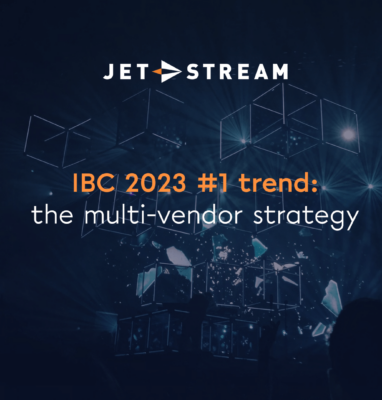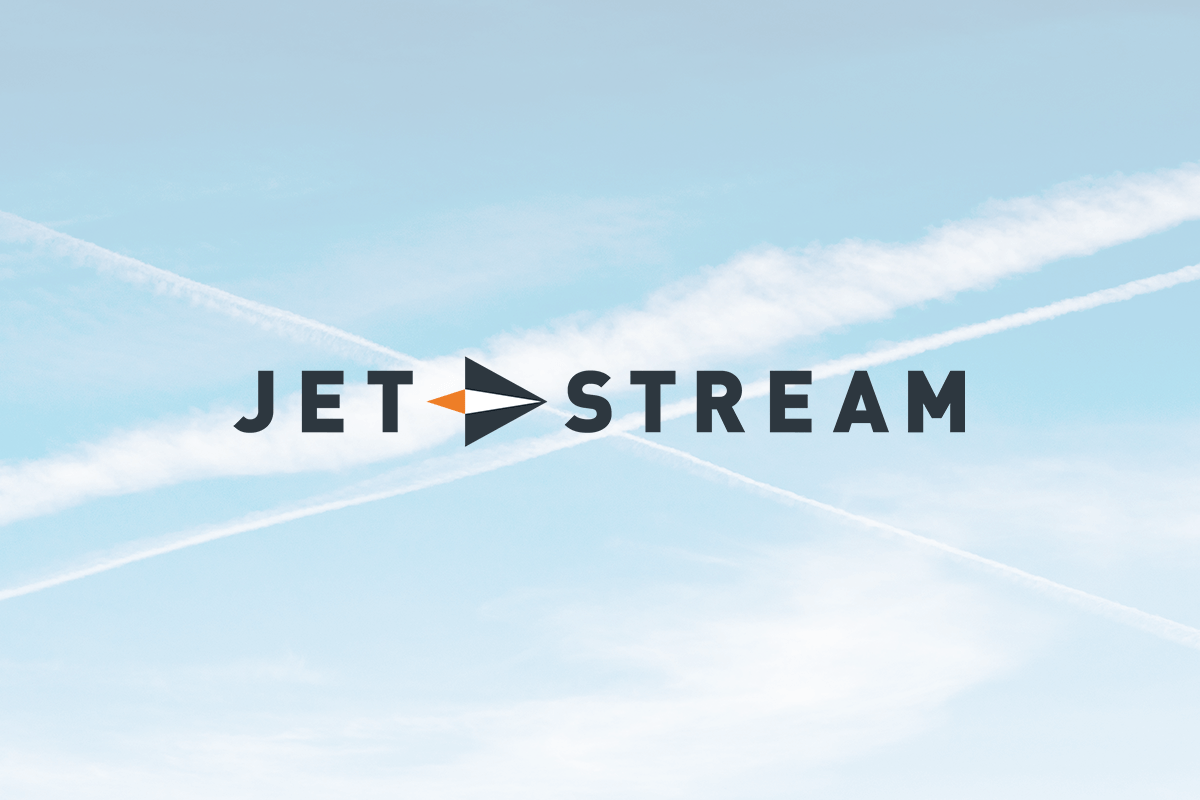IBC 2023’s number one trend: the multi-vendor strategy
Last updated: 20 September 2023

After many conversations at IBC (almost back to the old level, if you weren’t there you missed something!) we noticed a few things:
5) Buzzwords.
It’s the same every year: new vendors with numerous buzzwords such as AI, immersive, latency, innovation, future, cloud and real-time, vendors that you no longer hear from a year later. If you then ask whether their product is really finished and whether you can test it, even more buzzwords are thrown around. To play with that a bit, we organized an IBC 2023 Bingo: whoever took the most selfies with these words could win a prize. It turns out that most people in tech and business prefer to stay behind the camera rather than in front of it 😉
4) Green?
Every stand should actually make carbon-neutral services a top priority. Unfortunately, most stayed far away from it, while many broadcasters do set green as a top priority, and rightly so. So it is a missed opportunity. Fortunately, there were some highlights, such as a good session of Greening of Streaming, with numerous parties having a substantive discussion about how they can make the world of glass-to-glass streaming more energy efficient (and also cheaper). Hopefully next year there will be more attention to this subject, also among the exhibitors.
3) Data protection?
Broadcasters now work with numerous suppliers in their chain, and that entire chain uses large amounts of data. AI was certainly a buzzword at the IBC 2023, but AIs are trained with data. Who knows, that may also be your data, which contains competitively sensitive information, such as your programming, your advertisers, your reach, geography, devices, and your formats. Are you sure that your suppliers will not steal your data, share it, resell it or enrich it themselves? How do you avoid competing with your own data? And how GDPR compliant are non-EU clouds actually (hint: not). Missed the opportunity to pay more attention to data protection.
2) Profitability and future sustainability?
The streaming industry is having quite a hard time. Not only do OTT parties experience that profitability is a challenge, but this applies even more to suppliers in this market. Substantial investments were made in many vendors a number of years ago, while the expected growth did not materialize. In order to grow, parties started selling below their cost price or gave away 10 to 100 thousand euros in welcome bonuses. That is not a stable long-term strategy. The first consequences are already clearly visible: rounds of layoffs, services being turned off, vendors that stop providing services, leaving customers horrified.
We expect many more of these unpleasant changes in the near future. The most vulnerable vendors are those in which too much has been invested and had too much focus on growth. Their customers have become seriously concerned about the stability of their supplier(s). Especially if they are deeply integrated with them and have created a lock-in for themselves. Suppliers are asked painful questions: how financially solid are you, do you have cash flow problems, how long time are your investors committed? Can you continue to deliver at this price? Buyers also have some responsibility for this situation themselves, by mainly opting for the cheapest possible deal in the short term. And this is now taking its toll on continuity.
1) Multi-vendor strategy as a trend on IBC 2023
For that reason, many parties are looking for more control this year. Imagine that your entire core business is dependent on 1 supplier, and that supplier is quitting that service, laying off the team, or going out of business?
Many parties consider two options to gain more control over the core technology:
a) On-premises, away from the cloud
‘The cloud’ turns out not to be as saviour as expected. The costs are significant, very significant. Not only those of the cloud itself. But also the hoped-for operational cost savings are not forthcoming: building and keeping a solution in the cloud turns out to be more complex and expensive than expected. To save costs and gain more control over core processes, parties are now considering bringing critical processes such as live transcoding, packaging and video origins back in-house (or organizing this with a solid partner). An additional advantage is that you can accommodate this infrastructure with multiple (cloud or hosting) infrastructures and that you can work with multiple CDNs.
b) Multi-vendor abstraction
Deeply integrating one supplier’s API appears to be a major vulnerability and dependency, highlighting the importance of a multi-vendor strategy. What if that supplier collapses? If you are going to migrate, you do not want to make the same mistake again by switching from party A to party B, but you want to place an abstraction layer in between so that migration is a matter of a click, or at most a few days, instead of months: time, resources and costs that could also have been invested in innovation.
Jet-Stream and our multi-vendor strategy
‘the show must go on’
We have lasted a little longer than most suppliers in our industry, and have learned the hard way that you have to make a number of strategic choices for the future security of your company. These may be more expensive and complex at the time but offer benefits in the long term.
Financially prudent policy
In the 20 years of our companies’ existence, we have not worked with investors who can impose impossible growth expectations, forcing the sales teams to sell on growth, under price, or under quality. The risk is that competitors can grow much faster and continue to innovate with cowboy practices. But practice has shown that our more conservative strategy ensured cost control, manageable growth, quality and, not unimportantly: satisfied customers.
On-prem cloud
We have invested heavily in vendor independency. We rent racks and run our own hardware, our own network. And we run our own cloud stack on it, instead of outsourcing it. This gives us much more control over our core services and we are not dependent on a cloud supplier.
Portability
By upgrading our tech stack so that it can run entirely in cloud stacks, portability has also become much easier. For example, we run a backup stack with a 2nd infrastructure supplier. If our first supplier has problems for whatever reason, we can in case of emergency continue our core service. Always have a plan b.
In-house for more independence
External software and services have been almost completely phased out. For example, we develop our own media players and our own transcoding services, so that we can run these ourselves (cheaper and more efficiently) in our own cloud. Without dependence on external vendors.
Backup services
The architecture of our platform is designed in such a way that we can switch to backup suppliers ourselves. For example, we use our own transcoding service by default, but can immediately set up per customer to temporarily use an external pre-integrated cloud transcoding service. This may be temporarily more expensive, but at least the core process for customers will not break down.
Abstraction layers
We have been building our software in a new way since 2009: splitting the control plane and the delivery plane was a new design philosophy. And it really works fantastic. All intelligence, APIs, applications and portals run in our own cloud, as well as the ‘dumb stamping’ such as storage, transcoding and delivery. This abstraction layer makes running a streaming service more efficient, but also much more independent.
Multi CDN strategy
A good example is multi-CDN. Thanks to the above-mentioned architecture, Jet-Stream was able to integrate multiple CDNs into the system more than ten years ago. These CDNs act as edges within the Jet-Stream network and are fully integrated. An ideal mix of CDNs is set for each customer, a mix that suits the use case. This may concern, for example, geographical coverage, security, performance or costs. Thanks to active load balancing, each viewer is analyzed individually by an algorithm and forwarded to the best CDN in real-time. If one of the suppliers fails, it will be temporarily removed from the pool. The algorithm focuses on cost savings and guarantees performance and uptime. Each customer can also adjust the CDN mix in real-time, per stream and per video, based on its own intelligence. The investment cost Jet-Stream approximately one million euros, but the benefit since the introduction is priceless.
Open workflow
Jet-Stream’s Cloud is not a generic cloud but offers numerous professional applications and services such as live origins, vod origins, edges, packaging, transcoding, security, players, and analytics. What makes Jet-Stream Cloud special is that you can also integrate your own services (or those of multiple suppliers): your own origins, your own packagers, your own transcoders, analytics, CDNs, players, DRM, and so on. You can easily mix Jet-Stream’s services with those of your own or your suppliers.
Thanks to easy interfaces and APIs, you can build your own independent streaming stack without an expensive and time-consuming team. We call these workflow orchestration and automation tools Jet-Stream Mix and won an award with them last year. You have the benefit of all the abstraction layers and integrations and multi-vendor strategy of Jet-Stream, and you can create your own environment without having to start from scratch. It will save you tons and months, maybe even a year. And you are more independent than all your competitors.
We think along, here to help
We would like to help you share our 30-year knowledge and experiences with building and developing high-availability streaming infrastructures. Please call us if you want to learn more and get out of that situation of dependency. We always think from your perspective: our solution is not always the best for you, but often it is. We don’t stand still ourselves, we always see room for improvement. Jet-Stream offers workshops on multi-vendor strategy, streaming 101 workshops for teams wanting more expertise, on-premises tech workshops, and private cloud workshops.
On-premises tech
We recently launched MaelStrom Deep Edge and immediately won an innovation award with it. This solution runs both in the cloud and on-premises. So you can bring it into your home, place it with us, or run it elsewhere. What does it do? Live transcoding, packaging, origin, and edge. But smarter: 90% energy savings compared to CPU transcoding, dynamic cloud stack (high availability) and super simple user interfaces. Who knows, it might be the solution for you to bring your streaming stack back into your home: greener, with data protection, cheaper, easier and 100% control. We are happy to operate your private cloud in our environment and help with migration.
Cloud service
The cloud is still a serious option, but work with a cloud with abstraction layers such as Jet-Stream Cloud. This cloud is optimized for streaming: live, on-demand, video, audio and radio. A few advantages: multi-vendor strategy, abstract, high performance, high uptime, lots of ready-made technology that you can tune yourself, own integrations, 100% GDPR compliant, green, and supported by a team of specialist engineers who are happy to help you.
Want to learn more? Call.




